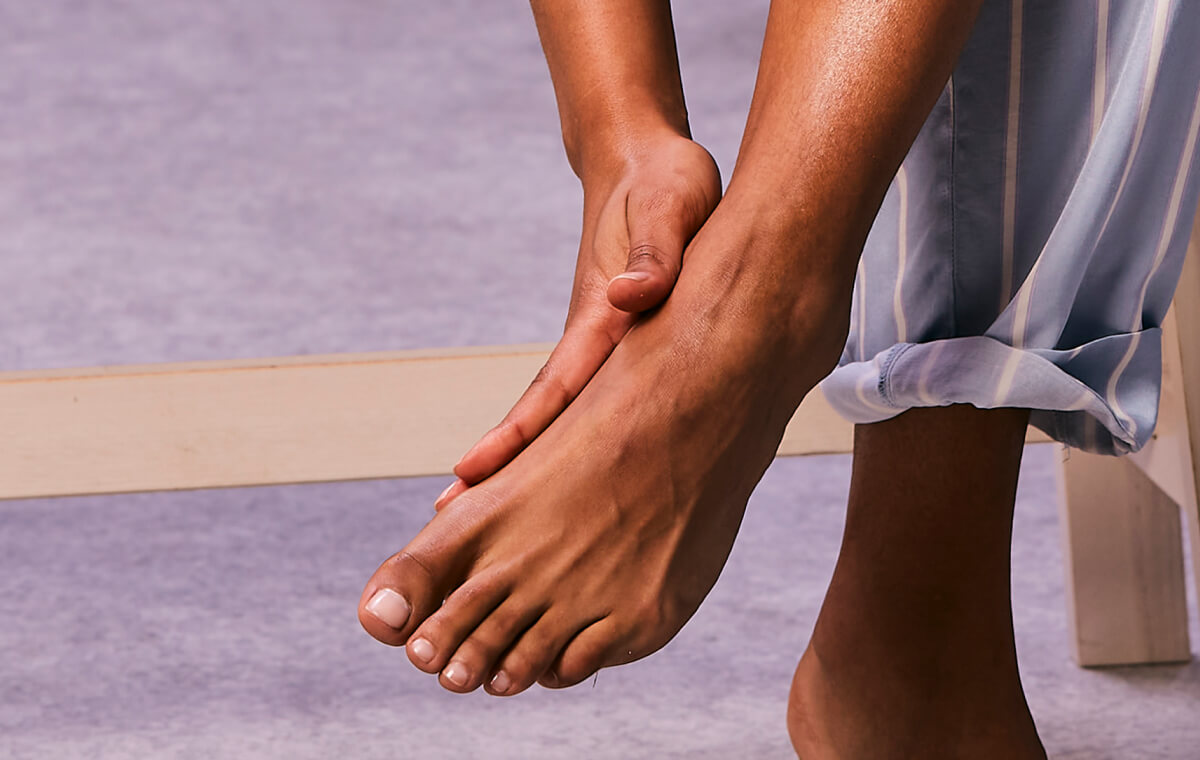Running errands, chasing the little ones around the backyard, getting you through that challenging workout class — your feet deserve some TLC for all that they do, whatever the season.
But when it’s time to break out your favorite sandals, things get a bit more urgent. If you’ve noticed that the skin on your feet isn’t looking or feeling its best lately, stay tuned for expert solutions to help repair them. These simple, easy steps will show you how to repair dry, cracked heels, and banish rough skin just in time.
First thing on the list? Getting to know more about the skin on your feet. To start, it’s up to 50 times thicker than the skin on your face. However, it contains fewer fat cells than other parts of your body, making it more prone to moisture loss and, in turn, dryness. That brings us to another point…
Why do your heels crack?
Heels endure a lot throughout the day, bearing considerable friction and pressure (literally). When the skin on your feet starts to get dry, its structure can change, beginning to tear or even break. Coupled with a natural loss of elasticity over time, painful cracks may start to appear.
Another factor? The weather. While every season has its challenges, it’s no secret that your heels are often at their worst in winter, as temperatures chill and the air turns crisp. Less moisture in the environment causes skin to become drier, so your feet are more likely to peel and crack during the colder months. However, you might also experience these changes after days spent in chlorinated swimming pools or after walking barefoot on rough surfaces.
That’s why moisturizing your feet daily is key to their well-being. No matter the time of year, if you notice peeling, itching, roughness or redness, it’s time to take action.
How to repair dry, cracked heels
1. Keep your feet as clean as you can
It might seem obvious, but proper foot hygiene plays a significant role in their appearance. Especially in the summer, when you tend to wear open-toed shoes and high temperatures might make you break a sweat. Forgetting to clean and dry your feet properly can lead to infections and irritation. And both can cause red, flaky skin to form on the feet, and produce cracks or blisters.
So, what can you do? Wash your feet daily with a gentle, hydrating cleanser that won’t dry out the skin. Try to avoid harsh cleansers that strip your skin of its natural oils. Because to prevent dry, cracked heels, it’s crucial to keep your skin’s natural moisture barrier intact. And when in doubt, seek out expert advice from your dermatologist.
2. Exfoliate your heels after showering
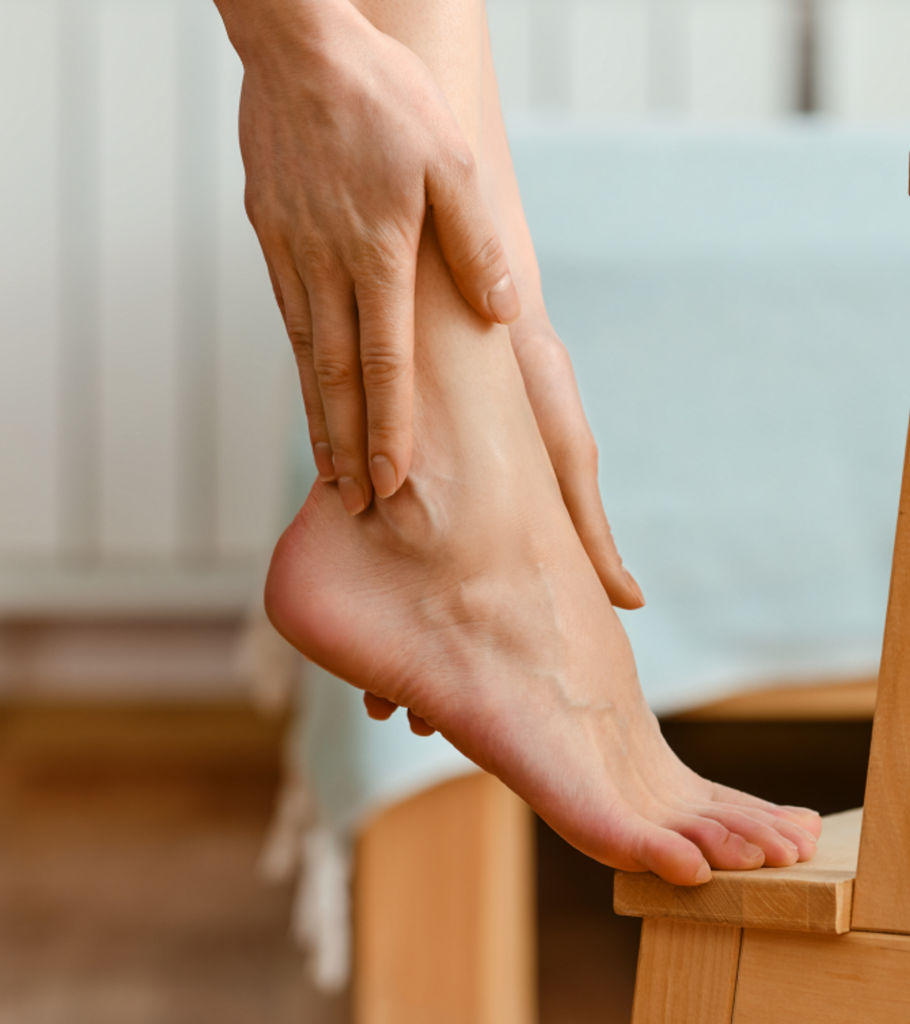
Exfoliation is your greatest ally in removing rough skin and preventing thick patches from forming on your heels. Keep in mind that there are two types of exfoliation: physical (scrubs and tools) and chemical (acids and other skincare ingredients). Both are important in a proper foot care routine — but in this step, we’re talking about physical exfoliation.
Where to start? Avoid metal files or highly abrasive tools, as they could worsen irritation. Instead, opt for smooth, natural pumice stones or sponges.
After showering, the outer layer of your skin will be soft, damp, and easier to exfoliate. It’s the ideal moment to give your heels a gentle once-over and manually scrub away any stubborn rough patches.
3. Use an exfoliating moisturizer
Sound like a contradiction? Fortunately, it’s not — depending on the concentration, certain skincare ingredients can offer more than one benefit. Take urea for example. In low concentrations, it deeply hydrates and softens the skin, while in high concentrations, it provides powerful exfoliation to smooth even the roughest areas. Plus, it can offer the best of both worlds in moderate concentrations.
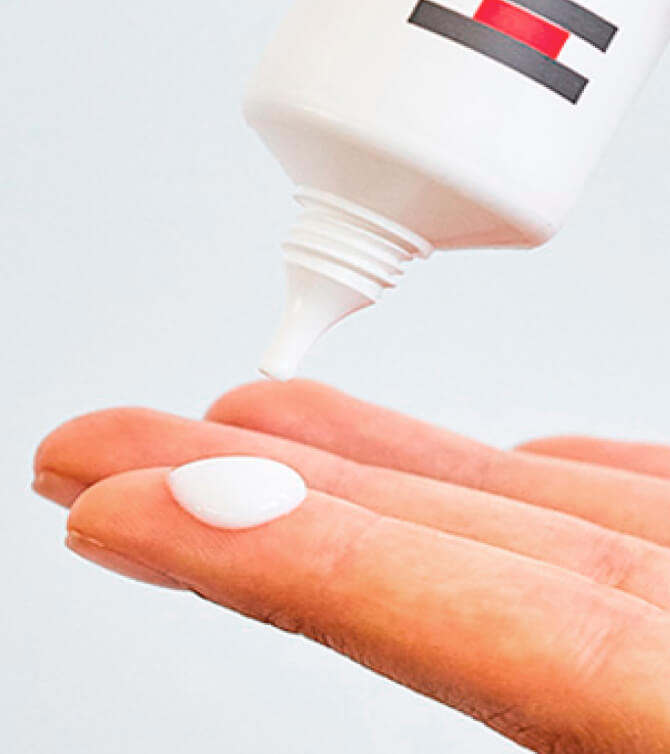
Our recommendation? Introduce a gel-oil foot moisturizer featuring urea into your body care routine to help soften skin and maintain optimal moisture levels. Additional ingredients such as hyaluronic acid, panthenol, and shea butter work together to help repair dryness and cracks.
Overall, if you want to keep the skin on your feet soft and smooth all year round, the key is to moisturize daily using a targeted formula. Having trouble keeping up with your new routine? Keep your foot moisturizer right next to your body lotion as a gentle reminder to use both.
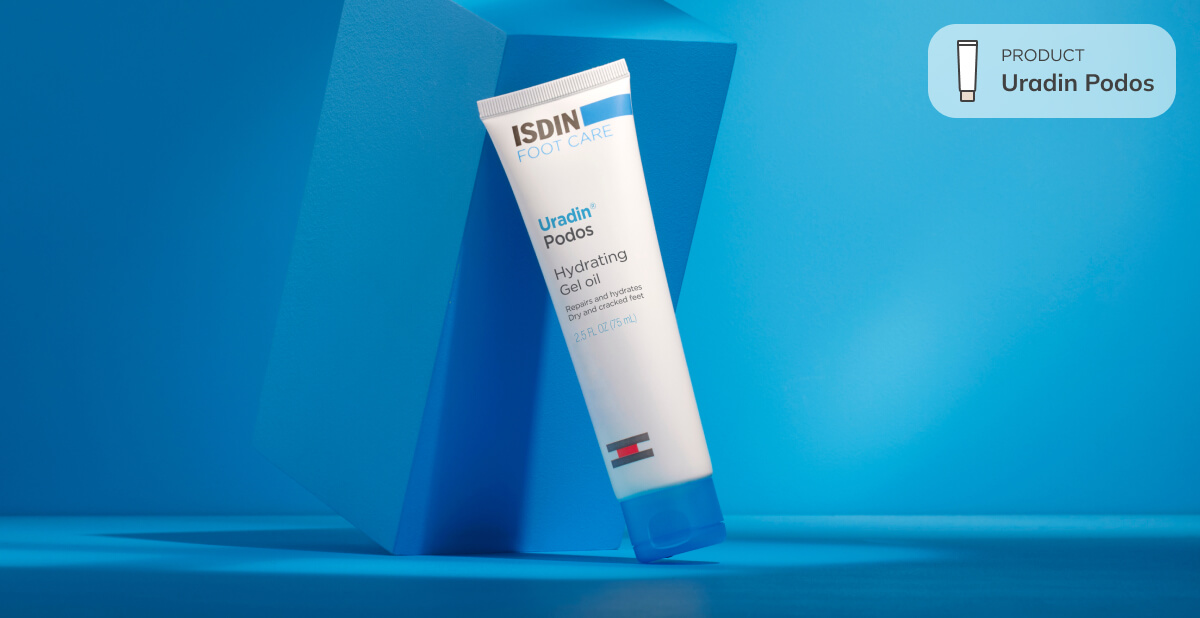
What else can you do for your feet?
This quick three-step routine wouldn’t be complete without these last few tips — because you can also combat the appearance of dry, cracked heels with other healthy daily habits:
- Wear socks made of natural fabrics, such as wool or cotton. Synthetic fabrics can make your feet sweat and cause further irritation.
- Make sure your shoes fit properly. Some extra breathing room can help prevent excessive friction.
- Can’t wait to break out your new sandals? Try them on around the house first. There’s nothing more frustrating than blisters or chafing from the shoes you’ve been dying to wear. If you notice any discomfort, apply additional moisturizer to that area before leaving the house.
- Protect your feet from the sun. This is one of the easiest places to forget sunscreen, although it shouldn’t be! It’s just as important to protect the skin on your feet.
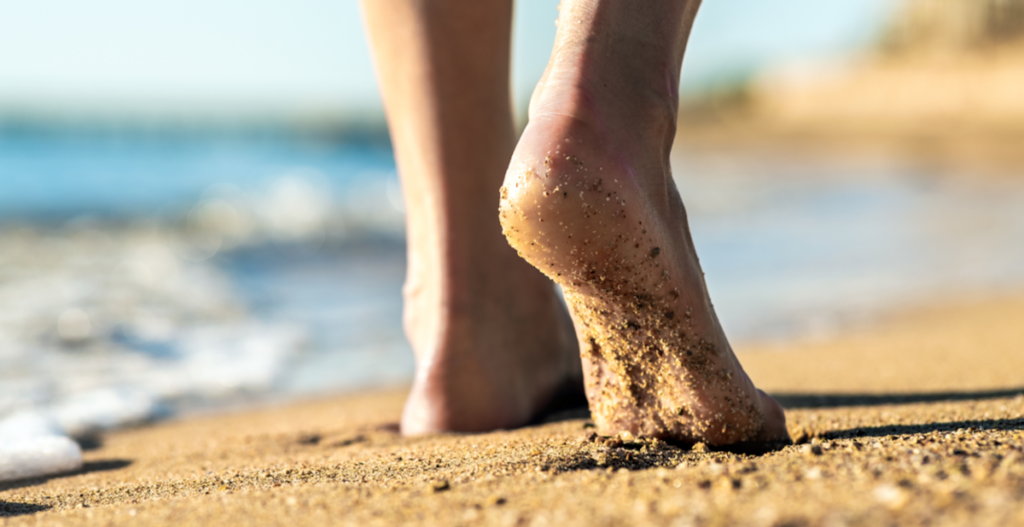
By paying your feet the same attention you do to the rest of your body, you’ll help to keep them looking clean, soft, and beautiful. So, make the most of your foot care routine and give yourself some time to put your feet up and relax. Because skincare is self-care.
Editorial Team
Our namesake embodies the spirit of embracing life and all its wonder. As wellness journalists, we explore topics that invigorate the senses and keep curiosity alive. We believe that glowing skin is the result of a healthy body and mind. Weaving beauty with science, we aim to inspire you to live young at every age.

